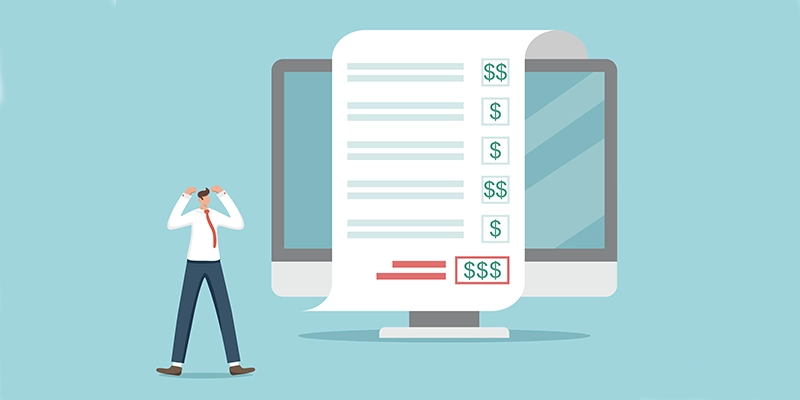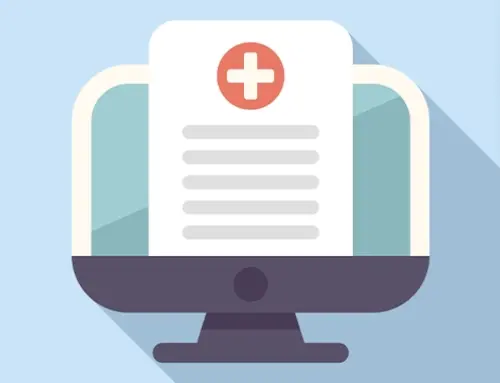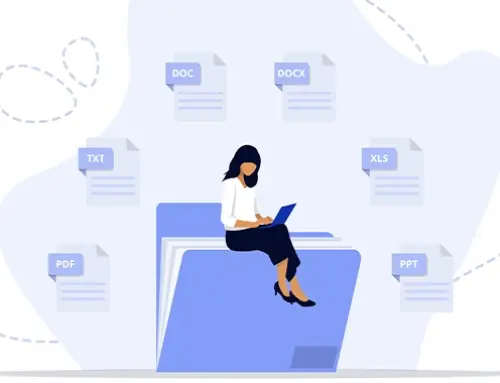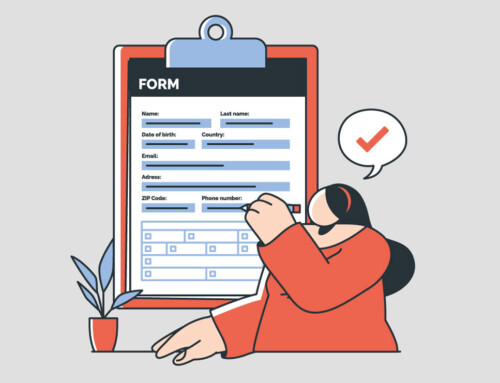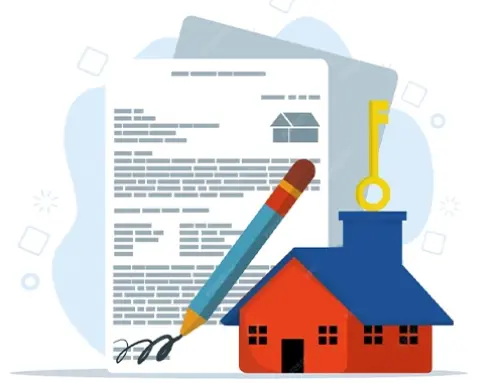Contents
Professional billing is a core obligation in legal practice, fundamental to firm operations, building strong attorney-client relationships, and maintaining healthy cash flow. In a profession where precision and accountability are paramount, how you bill directly reflects your firm’s transparency, ethics, and attention to detail.
An attorney billing statement, or legal billing statement, is the foundational document through which legal services are communicated and justified. It outlines the work performed, time billed, expenses incurred, and payment terms. When structured correctly, it clarifies clients, reinforces the value of your services, and promotes trust.
Conversely, vague or inconsistent invoices can lead to confusion, disputes, payment delays, and strained client relationships. These aren’t just administrative errors—they pose real risks to client satisfaction, professional standing, and compliance obligations. For law firms aiming to grow sustainably and operate with integrity, implementing best practices in legal billing is non-negotiable.
This guide will walk legal professionals through the essential components of a professional attorney billing statement and offer step-by-step guidance on creating one that is accurate, client-friendly, and compliant with industry standards.
Why Professional Billing Statements Matter
For law firms, an attorney billing statement is the cornerstone of professional communication, financial integrity, and operational efficiency. A well-crafted billing statement supports client trust, minimizes payment friction, enhances your firm’s image, and ensures accurate record-keeping. In a legal market driven by accountability and precision, how you bill is as important as how you practice.
A. Transparency Builds Trust and Enhances Client Relationships
Clarity in billing directly impacts how clients perceive your value and professionalism. A detailed legal billing statement that outlines services rendered, time spent, and costs incurred reinforces client transparency and fosters trust. When clients understand exactly what they’re paying for—and why—they’re more likely to feel satisfied and confident in your representation.
- Eliminates ambiguity by clearly connecting charges to specific services
- Reduces client anxiety and skepticism about billing accuracy
- Helps establish long-term loyalty and satisfaction
- Sets the tone for open, respectful financial communication
Include definitions or clarifying notes for legal tasks or codes to make complex legal work more understandable for clients, especially those unfamiliar with legal billing norms.
B. Reduces Disputes and Payment Delays
Billing disputes are often the result of incomplete or unclear documentation. When charges aren’t fully itemized or don’t align with expectations, clients are more likely to push back or delay payment. A clear, well-documented attorney billing statement prevents these misunderstandings before they occur.
- Thorough service descriptions justify fees with concrete evidence
- Accurate billing information (dates, rates, hours) reduces room for dispute
- Payment terms and due dates clarify client responsibilities
- Detailed formatting ensures clients can easily trace billed items to work performed
Include a contact point for billing questions. Clients are more likely to resolve confusion constructively when they know exactly whom to speak to.
C. Reinforces Firm Professionalism and Brand Perception
Your billing statements reflect your firm’s commitment to professionalism. A sloppy, disorganized invoice may cause clients to question the reliability of your legal work. In contrast, a polished legal billing statement communicates order, consistency, and attention to detail—all qualities clients expect from trusted legal advisors.
- Consistent formatting, branding, and language strengthen a firm’s identity
- Clean layouts improve readability and reduce client frustration
- Eliminates careless errors that damage credibility and invite scrutiny
- Professional billing design communicates that your company values precision and quality in all operations
Best practice elements to include: firm logo, contact info, consistent fonts and layout, accurate calculations, and concise but complete language.
D. Improves Cash Flow Through Faster Payments
An attorney billing statement that is easy to understand leads directly to faster client payment. Confusing or incomplete invoices create delays, not because clients can’t pay, but because they won’t until they know the charges.
- Itemized bills reduce payment cycles
- Stated totals and due dates eliminate ambiguity
- Online payment options simplify the process and encourage faster action
- Efficient billing decreases reliance on collections and follow-up
Pro tip: Avoid legal jargon and use plain language where possible. Clients who immediately grasp your invoice are more likely to act on it quickly.
E. Supports Ethical Compliance and Strong Record-Keeping
Beyond payment, a legal billing statement is a legal, financial, and ethical record of services delivered. Invoices are part of the professional trail required for audits, tax reporting, client audits, or dispute resolution.
- Accurate records fulfill compliance requirements set by bar associations
- Statements document services for future reference or legal justification
- Financial teams rely on consistent billing to manage revenue, taxes, and forecasting
- Good billing documentation supports transparency in long-term relationships
Bonus benefit: Historical billing records can help scope future client work and clarify service trends or workload distribution.
Essential Components of an Attorney Billing Statement
A professionally structured attorney billing statement serves multiple roles: a financial summary, a compliance record, and a formal communication tool. A well-documented invoice ensures timely payment and reflects your firm’s professionalism and ethical standards. Below is a breakdown of the essential components that every legal billing statement should include.
A. Header Information: Establishing Professional Identity
The header sets the stage for the billing document, reinforcing your firm’s identity and signaling the invoice’s purpose. It should clearly display the firm’s name, logo, and contact details, along with the words “Invoice” or “Billing Statement” prominently labeled.
While design preferences may vary, consistency is key. Whether your firm uses a bold header with a centered logo or a minimalist format, it should remain uncluttered and easily recognizable. Ensure contact information is immediately accessible, supporting both client communication and record-keeping.
B. Client and Matter Information: Ensuring Accurate Attribution
This section guarantees that the invoice reaches the right recipient and is associated with the correct legal matter. This information is critical for firms handling multiple engagements per client to avoid miscommunication or payment delays.
- Full name of the client or business entity
- Billing address and contact email
- Matter name or file reference
- Law Firm Matter ID (especially for clients using e-billing platforms like CounselLink)
Accurate identification facilitates faster processing and supports internal organization and audit readiness.
C. Invoice Details and Payment Terms
The invoice metadata section builds the tracking, compliance, and scheduling foundation. It should be designed to provide clarity for both the firm and the client.
- Invoice date
- Billing period (e.g., “April 1 – April 30, 2025”)
- Unique invoice number
- Payment due date and applicable terms (e.g., “Net 30 days””)
- Accepted payment methods
This administrative detail helps establish an audit trail, defines the financial expectations, and minimizes ambiguity regarding timing and obligations. For ways to avoid delayed payments, refer to Securing Timely Payments.
D. Detailed Description of Legal Services
This section forms the core of the attorney billing statement. It must communicate the nature of the work performed and justify the time and cost associated with each entry.
Each service should be listed individually with the task date, the timekeeper’s name or initials, the hours worked (typically in tenths of an hour), and a detailed yet concise description of the service provided. Clients should never have to guess what was done or why. Phrases like “Prepare response to motion for summary judgment” or “Client consultation on IP enforcement strategy” provide clarity and context.
Avoid practices such as block billing or vague entries like “worked on case.” Instead, adopt a transparent, itemized approach that reinforces professionalism and reduces disputes.
E. Expense Breakdown: Clarifying Non-Legal Charges
Most legal matters involve reimbursable costs in addition to time-based fees. Listing these separately provides transparency and maintains ethical billing practices.
- Description of the expense (e.g., “Court filing fee” or “Transcript service””)
- Date incurred
- Amount charged
- Vendor or service provider (if applicable)
This section should follow pass-through billing rules—charging clients exactly what the firm paid, without markup, unless otherwise agreed. Clear labeling of expense categories, such as court costs, administrative expenses, or third-party expert fees, ensures clients understand what they’re paying for.
F. Billing Summary: Presenting Total Obligations
The billing summary clarifies the overall financial picture by synthesizing service fees and expenses into a final amount due.
This section should provide:
- Subtotal for legal fees
- Subtotal for expenses
- Any applicable taxes
- Total due
Formatting this section for visibility, such as bold fonts or shaded rows, makes it easier for clients to review and pay promptly. You may include any previous balances or partial payments for ongoing matters to keep the client fully informed.
G. Trust Account Summary: Ethical Fund Management
When retainers or advance deposits are held in trust, firms must disclose how those funds have been applied. This section helps fulfill ethical obligations and prevents misunderstandings.
It should include:
- Previous trust balance
- Amount applied to the current invoice
- Additional deposits received during the billing period
- Current trust balance
- Remaining client balance due (if applicable)
This level of transparency aligns with the ABA Model Rule 1.15 and other state-level requirements on client fund handling. It also gives clients confidence that their funds are managed with integrity.
H. Payment Instructions: Enabling Timely Remittance
The final section of the legal billing statement should guide the client through the payment process easily. It should list the total amount due, accepted payment methods, and clear remittance details. Include any secure online payment links, “payable to” names, and instructions for ACH or wire transfers, if applicable.
Add SWIFT or IBAN codes as needed for firms working with international clients. This policy should be transparently stated here if your firm enforces late payment penalties. Consider closing with a brief, professional message that thanks the client and offers contact information for billing-related inquiries.
Adhering to this structure will ensure that your attorney billing statements reflect the same attention to detail, ethical compliance, and professionalism that clients expect from your legal services. It will transform the billing process from a routine task into a strategic touchpoint supporting financial operations and client satisfaction.
How to Create an Effective Billing Statement
An effective attorney billing statement goes beyond listing hours and totals—it reflects your firm’s professionalism, accuracy, and operational discipline. By refining your billing practices and leveraging the right tools, law firms can reduce administrative overhead, increase realization rates, and improve client relationships.
This section outlines practical, strategic methods to create legal billing statements that are both client-friendly and financially sound.
A. Leverage Templates for Consistency and Professionalism
Templates offer a foundational structure that ensures each invoice you send is complete, accurate, and on-brand. Using pre-designed templates helps maintain formatting consistency across all client invoices, reduces the chance of errors, and eliminates the need to start from scratch each month.
Depending on their workflow preferences, firms can choose from various formats—Word, Excel, PDF, or Google Docs. Custom templates are ideal for firms with specific billing requirements. These include branding elements, jurisdiction-specific tax fields, and client-specific formatting rules.
Excel-based templates are especially valuable when invoice data requires dynamic calculations. Firms can automatically calculate subtotals, taxes, and totals with built-in formulas. More advanced templates can include analytics tools like PivotTables to assess billing data across timekeepers, clients, or matter types.
B. Utilize Legal Billing and Practice Management Software
Legal billing software automates the most time-consuming parts of the invoicing process. While many small firms still rely on manual systems, transitioning to software is a game-changer for operational efficiency and billing compliance.
Two main types of platforms are available: standalone billing systems and integrated practice management solutions. Standalone options focus solely on billing functions, while integrated platforms—like Runsensible, TimeSolv, or MyCase—combine billing with case management, calendaring, document workflows, and trust accounting.
Top features include:
- Real-time time and expense tracking
- Branded, customizable invoice generation
- Trust accounting compliance
- Online payment processing and secure client portals
- LEDES billing support for corporate clients
- Financial reporting and batch billing
Automated systems also allow firms to monitor when clients view invoices, send reminders for overdue balances, and reduce sales outstanding (DSO) days. These capabilities directly enhance cash flow while freeing attorneys from repetitive administrative tasks.
C. Track Time Contemporaneously to Improve Accuracy
Accurate billing starts with documenting time in real-time. When attorneys fail to capture time as they work, they often lose billable hours or reconstruct them inaccurately later, which leads to underbilling or unclear task descriptions.
Attorneys should record time immediately after completing a task to maintain accuracy. This practice preserves the work’s context and strengthens billing narratives. Modern billing software simplifies this process from any device, whether online or offline. Mobile-friendly interfaces let lawyers track time from court, client meetings, or while traveling, and the software syncs automatically once internet access resumes.
Firms using real-time tracking see higher realization rates and fewer billing disputes because their invoices become more transparent and defensible.
D. Use Clear, Standardized Descriptions and Billing Codes
Your legal billing statement should be a precise and professional record, not a cryptic list of tasks. Clarity in billing descriptions reduces confusion and helps clients understand the value of each service performed.
Phrases like “Prepare closing checklist for M&A transaction” or “Conference with opposing counsel re: discovery deadlines” provide context and purpose. In contrast, vague entries like “work on file” are more likely to be challenged or ignored.
Many firms implement UTBMS (Uniform Task-Based Management System) codes for corporate or institutional clients. These codes offer a standardized classification system that aligns with LEDES billing formats, which insurance carriers or in-house legal departments often require. UTBMS codes improve internal data analysis, streamline reviews, and support billing compliance for larger clients.
Narrative descriptions should also be free of jargon or unexplained abbreviations. Consistency across timekeepers ensures the invoice feels unified and professionally prepared.
E. Proofread and Implement a Multi-Level Review Process
Even minor billing errors can damage client trust, delay payment, or invite scrutiny from compliance departments. Proofreading is not optional—it’s a vital step in the billing lifecycle.
All invoices should be reviewed for math errors, duplicate or missing entries, correct hourly rates, and accurate client information. Invoices should also reflect any agreed-upon billing terms or discounts.
For high-value clients or complex matters, implement a three-tiered review process:
- The timekeeper reviews their entries.
- A billing coordinator verifies formatting and compliance.
- The supervising attorney conducts a final review.
This layered approach ensures accuracy at every level and upholds your firm’s professional standards.
F. Integrate Automation to Streamline Workflows
Automation is one of the most powerful tools available for modern legal billing. With automation, firms reduce the time spent on repetitive tasks and improve efficiency and financial performance.
Key automation capabilities include:
- Auto-generating invoices based on logged time
- Scheduling recurring invoices
- Sending invoices immediately upon completion of work
- Tracking when clients open invoices
- Automatically sending reminders for overdue payments
Instead of manually assembling invoices at the end of each billing cycle, attorneys and administrators can use batch billing tools to generate and distribute hundreds of invoices in minutes. These time savings directly translate into billable capacity and reduced administrative burden.
Law firms can create attorney billing statements that reflect legal rigor and business excellence by combining structured templates, specialized billing software, real-time time tracking, clear billing descriptions, and multi-step review processes. These strategies reduce errors, enhance transparency, improve collections, and strengthen client trust.
Firms that invest in refining their billing processes position themselves for long-term profitability and operational growth.
Best Practices for Attorney Billing
A well-executed billing strategy does more than improve collections—it builds client trust, ensures ethical compliance, and strengthens the long-term health of your practice. As law firms adapt to modern client expectations and operational demands, their billing practices must be clear, consistent, and client-centric. Below are the best practices for creating and managing attorney billing statements that enhance transparency, efficiency, and client satisfaction.
A. Set Clear Financial Expectations with Engagement Letters
The foundation of any billing relationship should be a written engagement letter that outlines scope, responsibilities, and payment terms. These letters are more than formalities—they are contracts that set the tone for billing communication and prevent misunderstandings down the line.
A comprehensive engagement letter should clearly define:
- The billing model used (hourly, flat-fee, hybrid)
- Hourly rates for attorneys, paralegals, and other staff
- Payment terms, including due dates and accepted methods
- What constitutes additional work outside the original scope, and how it will be billed
- The use of other personnel, such as associates or legal assistants
Engagement letters should also establish boundaries around scope. For instance, flat-fee arrangements must specify what is included and what will require additional charges, such as court appearances or depositions. Scope creep is a common source of disputes, and preemptively managing it protects your firm and client.
To further safeguard your firm, consider including a billing dispute resolution clause that lays out steps for mediation or arbitration if conflicts cannot be resolved through initial discussion.
B. Bill Regularly and Maintain a Consistent Cycle
Consistency in billing is not just about routine—it’s about credibility. Firms that follow a monthly billing schedule or other predictable cycle help clients budget more effectively, reduce questions about older charges, and avoid lengthy collection timelines.
Delays in invoicing often correlate with payment disputes or forgotten time entries. To build an efficient cycle:
- Require attorneys to submit all time entries by a specific day each month
- Use billing software to generate and deliver invoices upon approval automatically
- Track time in real-time to avoid lost billable hours and vague task descriptions
Research shows that law firms adhering to “bill early, bill often” principles enjoy fewer write-offs and stronger client relationships. Even clients who may disagree with charges are more likely to raise issues when invoices are fresh and timely.
C. Communicate Proactively and Respond to Inquiries Promptly
Transparency must extend beyond the invoice itself. Many billing disputes stem from clients not understanding their bills’ format, charges, or timing. Firms that proactively explain their billing process at the outset, such as rounding practices (e.g., time billed in 0.1-hour increments) and monthly invoice schedules, set the stage for trust and reduce confusion.
When questions or disputes arise, attorneys should take a collaborative and non-defensive approach. Rather than treating a challenge as an objection, treat it as an opportunity to clarify and reinforce the value of your work. Walk the client through any disputed entries, listen to their concerns, and explain the necessity and benefit of the services performed.
Effective responses include:
- Scheduling a meeting to walk through the bill
- Reviewing disputed entries together
- Addressing larger concerns (e.g., lack of updates or delays) that may underlie billing frustration
Taking the time to engage professionally with billing inquiries often results in stronger client relationships and increased retention.
D. Offer Multiple and Convenient Payment Options
Clients today expect digital convenience from all service providers, including law firms. Providing online payment options meets these expectations and significantly reduces the time between invoice delivery and payment receipt.
Firms should offer:
- Credit card and ACH payment options via secure gateways like LawPay
- Online portals where clients can access, view, and pay invoices
- Flexible payment plans or recurring billing for ongoing services
In addition to convenience, online payments improve accuracy and reduce non-billable administrative time. Integrated billing software automatically updates trust ledgers, reconciles accounts, and reduces human error in payment tracking. Clio’s research indicates that 57% of online legal invoices are paid the same day they’re received, compared to weeks for mailed checks.
Security is equally important. Using encrypted, PCI-compliant payment gateways ensures client confidence and supports ethical billing practices, especially when dealing with trust funds or retainers fees.
E. Track and Optimize Billing Performance
Billing is not just a task—it’s a measurable part of your firm’s financial strategy. Monitoring billing performance helps identify inefficiencies, improve realization rates, and inform future pricing models or staffing decisions.
Key performance indicators (KPIs) include:
- Realization rate: the percentage of billable work collected
- Collection rate: how fast invoices are paid
- Average DSO (days sales outstanding): the average number of days it takes to collect payment
- Write-offs: the total amount of fees discounted or waived
Firms that review their billing data regularly can make informed changes, such as adjusting staffing ratios, refining flat-fee pricing, or identifying problematic clients with chronic late payments. Most practice management platforms provide dashboards and reports that simplify this process.
F. Adapt to Client Expectations with Flexible Billing Models
The legal marketplace is evolving, and clients increasingly expect transparency and predictability in pricing. Flat-fee billing, subscription-based services, and hybrid models are gaining traction, particularly for transactional work, startups, and in-house counsel relationships.
While hourly billing remains dominant in litigation and custom advisory matters, consider offering flexible options where appropriate. When doing so, ensure your legal billing statement clearly reflects the agreed terms—itemizing deliverables, defining limits, and confirming that any out-of-scope work will be separately billed.
Clients appreciate options and often reward firms that can provide quality legal work and a billing model that matches their budget preferences.
Operationalize Transparency to Build Long-Term Trust
The most effective billing strategies prioritize transparency, structure, and client satisfaction. By setting clear expectations through engagement letters, billing consistently, responding thoughtfully to questions, offering digital payment options, and monitoring performance, your firm positions itself for lasting financial and reputational success.
Your attorney billing statement should never be viewed as an afterthought—it is a strategic instrument that reinforces your firm’s professionalism and commitment to ethical, client-centered service. Firms that modernize and systematize their billing practices will not only improve collections but also enhance client trust, operational efficiency, and long-term growth.
Final Thoughts
In today’s legal environment, billing is more than a financial function—it directly extends your firm’s professionalism and client service. A well-structured attorney billing statement improves cash flow, reinforces transparency, and strengthens client trust. Key practices such as issuing clear engagement letters, maintaining consistent billing cycles, and using detailed, accurate time entries contribute to greater billing efficiency and fewer client disputes. Research indicates that 84% of legal clients consider billing clarity a critical factor in their satisfaction, and firms that fail to meet this expectation risk delayed payments and reduced client retention. With an average 22% loss in potential revenue due to unclear billing or late invoicing, the financial impact of poor billing practices is significant.
Accurate billing is not only about arithmetic; it’s about ethical compliance and client perception. Each legal billing statement should provide clear task descriptions, correct hourly rates, and categorized expenses to justify fees and support timely payment. For instance, stating “Draft motion for summary judgment – 2.1 hrs @ $350/hr” communicates value and transparency. Overly vague or improperly formatted invoices can erode trust and even trigger audits. Runn.io says firms with error rates below 2% are paid 37% faster than those with frequent discrepancies. Law firms can transform billing from a potential friction point into a strategic advantage, supporting long-term client relationships and financial stability by focusing on clarity, consistency, and accuracy.
Put the best practices from this guide into action with a billing system built for law firms.
Runsensible streamlines everything from engagement letters to compliant, detailed invoices.
Deliver clearer, faster, and more professional attorney billing statements every time with Runsensible’s free trial.
FAQs
1. How can law firms ensure compliance with evolving billing regulations and avoid ethical pitfalls?
To maintain compliance, firms should regularly review and update their billing practices in line with the latest legal and ethical standards. This includes adhering to jurisdiction-specific rules, such as the ABA Model Rules, and being aware of recent court rulings that may impact billing procedures. Implementing clear, detailed billing statements and obtaining client agreement on billing terms can help prevent disputes and ethical issues. Utilizing legal billing software can also assist in maintaining consistency and accuracy.
2. What are the best practices for handling client disputes over billing statements?
Effective communication is key. When a client raises concerns, address them promptly by providing detailed explanations and, if necessary, itemized breakdowns of charges. Maintaining thorough records and documentation can support your position. Offering to discuss the bill in person or via a call can also help resolve misunderstandings amicably.
3. How can law firms optimize their billing processes to improve cash flow and reduce administrative burdens?
Implementing legal billing software can streamline the invoicing process, automate time tracking, and facilitate online payments. Regular billing cycles, such as bi-weekly or monthly invoicing, can encourage timely payments. Additionally, setting clear payment terms and following up on overdue accounts promptly can enhance cash flow.
4. What should be included in a billing statement to make it clear and comprehensive for clients?
A comprehensive billing statement should include:
- Your firm’s name and contact information
- Client’s name and matter reference
- Invoice number and date
- Detailed descriptions of services provided, including dates, time spent, and rates
- Itemized expenses
- Subtotal, taxes, and total amount due
- Payment terms and methods
Clarity and transparency in billing foster trust and reduce the likelihood of disputes.
5. How do law firms handle billing for contingency fee arrangements in their statements?
In contingency fee cases, it’s important to outline the agreed-upon percentage and any expenses deducted from the recovery. Once the case concludes, provide a detailed statement showing the total amount recovered, the contingency fee applied, expenses deducted, and the net amount due to the client. Transparency in these statements is essential to maintain trust and comply with ethical obligations.
6. Can law firms charge interest or late fees on overdue invoices, and how should this be communicated?
Yes, attorneys can charge interest or late fees on overdue invoices, provided it’s permissible under their jurisdiction’s rules and the client has agreed to these terms in advance. Clearly state the interest rate or late fee policy in your engagement letter and on each billing statement. Ensure that any such charges comply with local laws and ethical guidelines.
References
- ABA – Model Rules of Professional Conduct
https://www.americanbar.org/groups/professional_responsibility/publications/model_rules_of_professional_conduct/ - LawPay – Sample Billing Language for Attorneys
https://lawpay.com/about/blog/sample-billing-language-for-attorneys/ - Bill4Time – How to Create an Attorney Billing Statement
https://www.bill4time.com/blog/attorney-billing-statement/ - Lawmatics – Lawyer Billing Ethics Tips
https://www.lawmatics.com/blog/lawyer-billing-ethics-tips/ - Minute7 – Ethical Considerations in Legal Billing Practices for Law Firms
https://minute7.com/blog/ethical-considerations-in-legal-billing-practices-for-law-firms
Forbes Advisor – Best Legal Billing Software
https://www.forbes.com/advisor/business/software/best-legal-billing-software/ - LawBillity – Ethical Considerations in Legal Billing: Best Practices to Ensure Accurate Invoicing
https://lawbillity.com/post/ethical-considerations-in-legal-billing-best-practices-to-ensure-accurate-invoicing/ - HGExperts – The Client’s Guide to Law Firm Overbilling
https://www.hgexperts.com/expert-witness-articles.asp
Disclaimer: The content provided on this blog is for informational purposes only and does not constitute legal, financial, or professional advice.

